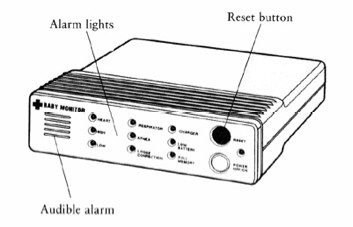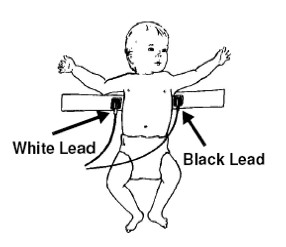Cardio/respiratory monitor
 Definition
Definition
A machine used to check a person's breathing and heart rate. It may also be called a CR monitor, an an apnea monitor or an apnea/bradycardia monitor. Its purpose is to detect and inform caregivers of potential life threatening events.
 This monitor uses two electrodes, lead wires and a patient cable to connect to the child. Pre-set limits alarm for tachycardia, bradycardia, or apnea.
This monitor uses two electrodes, lead wires and a patient cable to connect to the child. Pre-set limits alarm for tachycardia, bradycardia, or apnea.
- No commercial monitor is ideal to detect life threatening events with the tracheostomy because airflow is not assessed.
- The monitor will alarm when outside preset limits and alert caregivers about life threatening situations.
-
Best monitor is a vigilant, trained caregiver.
- Young children with a tracheostomy or ventilator often use a cardio/respiratory monitor during sleep, travel and when not closely attended.
- The prescribed alarm limits are preset and are not to be changed without a doctor's order.
- Know how to use the monitor, what the alarms mean and how to respond to the alarms.